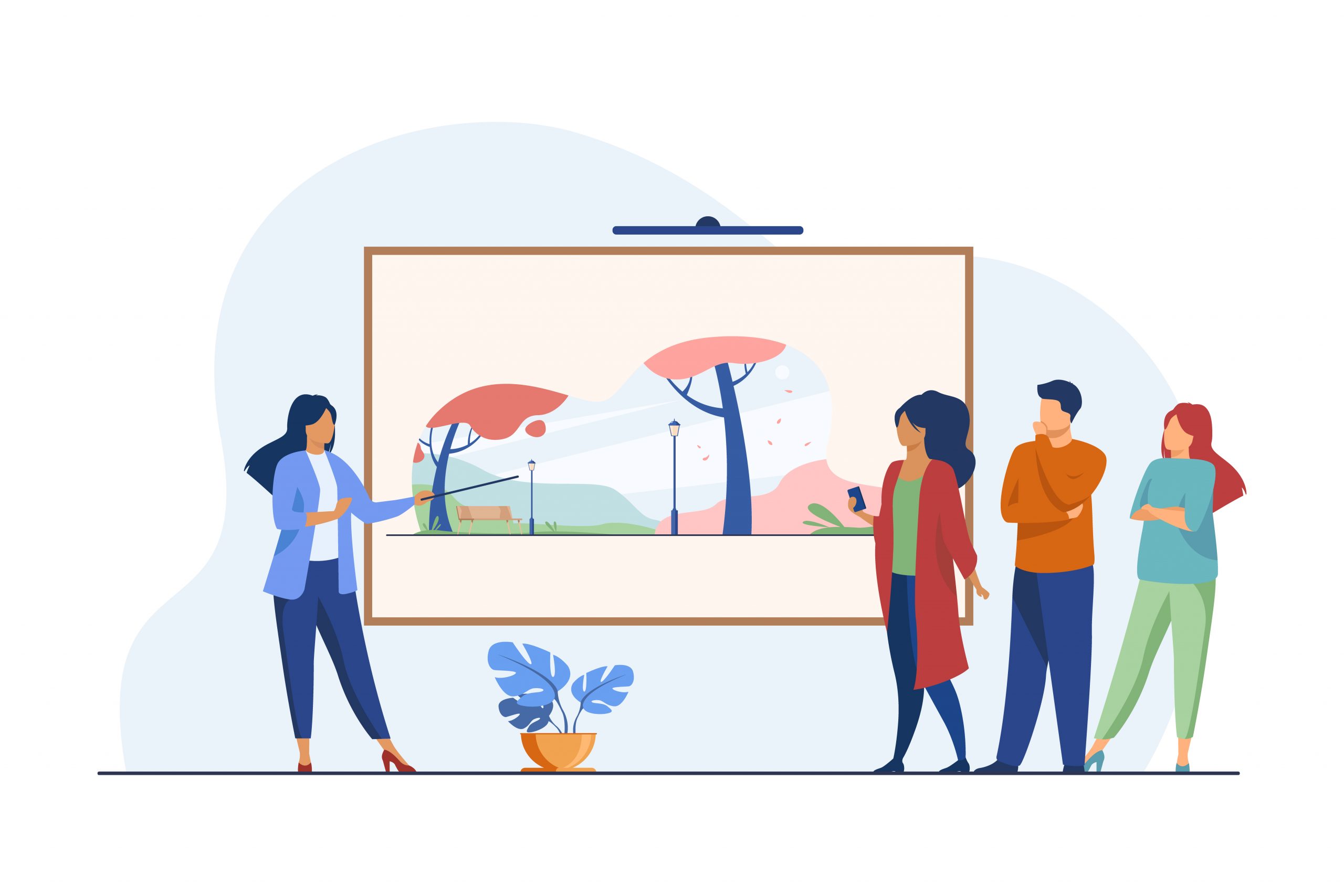🎨French Level 4, Activity 11: Le musée d’art / The Art Museum (Online)

Products: Artwork
Practices: Visiting an art museum, talking about artwork
Perspectives: France has always been famous for its artists and museums. Impressionism, one of the most famous styles of artwork to study, was born in France. The French therefore place a high importance on art and artists!
NCSSFL-ACTFL World Readiness Standards:
- Standard 1.1: Students engage in conversations or correspondence in French to provide and obtain information, express feelings and emotions, and exchange opinions.
- Standard 1.2: Students understand and interpret spoken and written French on a variety of topics.
- Standard 3.2: Students acquire information and recognize the distinctive viewpoints that are only available through francophone cultures.
Idaho State Content Standards:
- COMM 1.1: Interact and negotiate meaning (spoken, signed, written conversation) to share information, reactions, feelings, and opinions.
- COMM 2.1: Understand, interpret, and analyze what is heard, read, or viewed on a variety of topics.
- COMM 3.1: Present information, concepts, and ideas to inform, explain, persuade, and narrate on a variety of topics using appropriate media in the target language.
- CLTR 2.1: Analyze the significance of a product (art, music, literature, etc…) in a target culture.
- CLTR 2.2: Describe the connections of products from the target culture with the practices and perspectives of the culture.
- CONN 2.1: Access authentic materials prepared in the target language by or for native speakers.
NCSSFL-ACTFL Can-Do Statements:
- I can talk about different types of art forms.
- I can describe a piece of art.
- I can share my interpretations of a piece of art with someone else.
Materials Needed:
- Google Slide Presentation
- Vocab d’art (optional use)
Warm-up
1. Begin the activity by opening the Google presentation and introducing the Can-Do statements.
2. Ask the students these questions:
- Pouvez-vous nommer certaines formes d’art ? (sculpture, peinture, danse, cirque) (Can you name some art forms?)
- Est-ce qu’il y a des artistes parmi nous ? Si oui, quel type d’art pratiquez-vous ? Sinon, quel type d’art aimeriez-vous essayer ? (Are there any artists among us? If yes, what type of art do you practice? If not, what type of art would you like to try?)
Main Activity
Aujourd’hui on va discuter l’art.
1. Go through the Google slide (slides 6-15) and show the students the artwork on each slide.
Il y a une œuvre d’art sur chaque diapo.
2. Have the students describe the piece by answering these questions:
Pour chaque œuvre, on doit répondre aux questions de réflexion.
- Quel type d’art est cette œuvre ? (What type of art is this work?)
- Cette œuvre s’agit de quoi ? (Les couleurs, la composition, la matière, etc) (What are some of the elements of this artwork? (Colors, composition, etc.))
- D’après vous, quel est le thème/message de cette œuvre ? (In your opinion, what is the theme/message of this piece of artwork?)
- Que pensez-vous de cette œuvre ? Vous l’aimez ou non ? Expliquez votre réponse. (What do you think of this artwork? Do you like it or dislike it? Explain.)
3. Do this for each slide.
On va répéter ces étapes pour chaque œuvre.
4. There are 5 pieces of art in total.
- Les Coquelicots – Claude Monet (slide 6)
- La Petite Danseuse de quatorze ans – Edgar Degas (slide 8)
- Le pain et les œufs – Paul Cézanne (slide 10)
- Boulevard Montmartre, printemps – Camille Pissarro (slide 12)
- Femme au chat – Pierre-Auguste Renoir (slide 14)
5. There is a “Questions de réflexion” slide after every artwork slide.
*Share this document via the chat with the students to provide them with some art specific vocab they can use when forming their responses.
Voila un lien avec quelques vocabulaire d’art : Vocab d’art
Wrap-up
Ask the following question(s) to finish the activity:
- Quelles étaient vos œuvres d’art préférés de cette activité ? Pourquoi ont-ils attiré votre attention ? (What were your favorite works of art from this activity? Why did they come to your attention?)
- Avez-vous un artiste préféré ? (Do you have a favorite artist?)
End of Activity:
- Can-Do statement check-in… “Where are we?”
- Read can-do statements and have students evaluate their confidence.
- Encourage students to be honest in their self evaluation
- Pay attention, and try to use feedback for future activities!
NCSSFL-ACTFL Can-Do Statements:
- I can talk about different types of art forms.
- I can describe a piece of art.
- I can share my interpretations of a piece of art with someone else.
CULTURAL Resources
How to Remix a Pathways Project Activity
Feeling creative? The Pathways Project needs your help in remixing activities for the K-12 classroom.
Try taking an activity to the next level by:
- Add new content (something you’ve created or another OER source)
- Contribute additional activity suggestions
- Integrate authentic materials such as videos, infographics, photos, etc.
- Suggest how to implement the activity in the classroom
- Customize the content for a specific audience or group of learners (for example, K-5 learners or to differentiate for student’s needs)
We want to make it easy to share back with the larger Pathways Project Community! Simply, click this link to remix this activity.
Please consider sharing your remixed activity with us by emailing the activity link to Pathwaysproject@boisestate.edu so that Pathways continues to grow!

